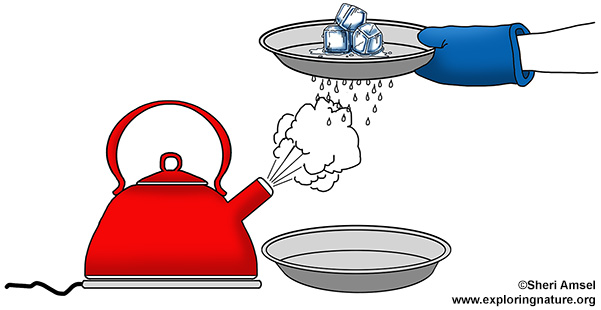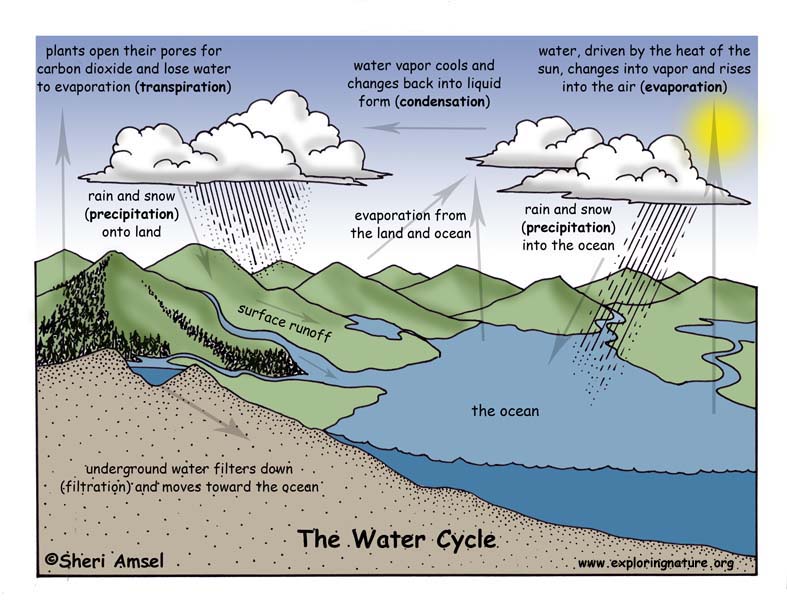

We have kept roughly the same amount of water on Earth as solid ice, liquid rain and gaseous water vapor throughout time. It continually cycles and moves from the ocean, polar ice caps, rivers, lakes, wetlands, snow, underground aquifers and water vapor in the clouds. This is called the water cycle. (See water cycle details under Ecology or Weather.)
Put very simply, water on Earth in the ocean and other waterways is heated by the sun and changes to water vapor – it evaporates. It rises into the atmosphere where the air pressure is lower and the temperature is colder. The water vapor cools and forms back into very tiny water droplets. The water droplets form clouds. The clouds gather all the tiny water droplets together until they are big enough to fall as rain or snow. This is also called precipitation.
Scientists plan and carry out investigations in the field or laboratory. We are going to carry out an investigation here to make the same conditions exist as it does in the water cycle and cause rain to fall right here, as it would in nature.
Read more about the Water Cycle.
Materials:
Procedures:
Explanation: Heating the water in the teapot, mimics the sun heating water on Earth into rising water vapor. The pan of ice water is the colder atmosphere above. When the water vapor rises and hit the cold atmosphere (ice water pan), it turns back into water droplets (condenses) and falls as rain.
NGSS: Appendix F – Science and Engineering Practices
Practice 3 - Planning and Carrying Out Investigations
K–2 Condensed Practices
Planning and carrying out investigations to answer questions or test solutions to problems in K–2 builds on prior experiences and progresses to simple investigations, based on fair tests, which provide data to support explanations or design solutions.
3-5 Condensed Practices
Planning and carrying out investigations to answer questions or test solutions to problems in 3–5 builds on K–2 experiences and progresses to include investigations that control variables and provide evidence to support explanations or design solutions.
6–8 Condensed Practices
Planning and carrying out investigations in 6-8 builds on K-5 experiences and progresses to include investigations that use multiple variables and provide evidence to support explanations or solutions.
When you research information you must cite the reference. Citing for websites is different from citing from books, magazines and periodicals. The style of citing shown here is from the MLA Style Citations (Modern Language Association).
When citing a WEBSITE the general format is as follows.
Author Last Name, First Name(s). "Title: Subtitle of Part of Web Page, if appropriate." Title: Subtitle: Section of Page if appropriate. Sponsoring/Publishing Agency, If Given. Additional significant descriptive information. Date of Electronic Publication or other Date, such as Last Updated. Day Month Year of access < URL >.
Amsel, Sheri. " Rain Making Activity - The Water Cycle" Exploring Nature Educational Resource ©2005-2024. December 13, 2024
< http://www.exploringnature.org/db/view/1343 >

